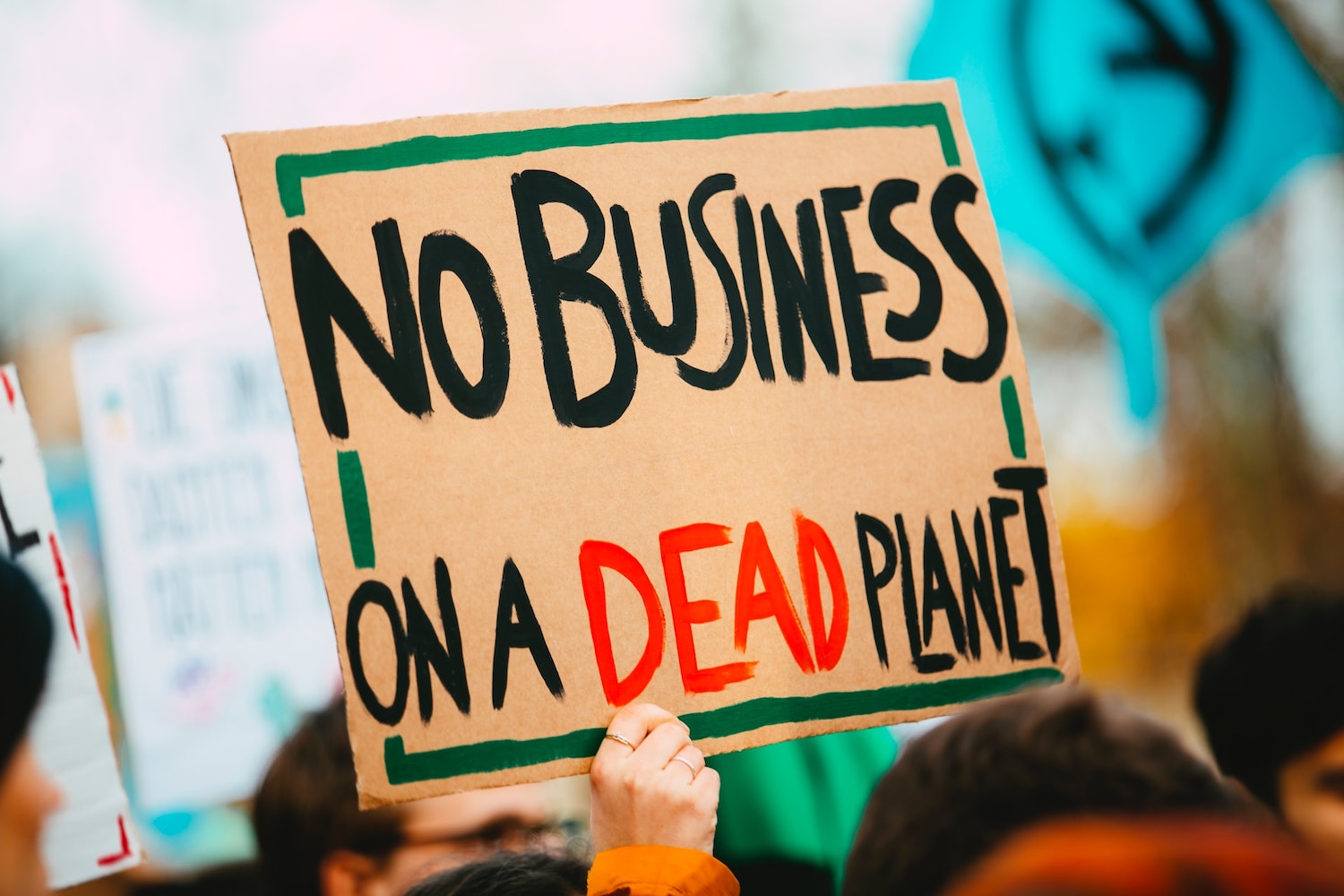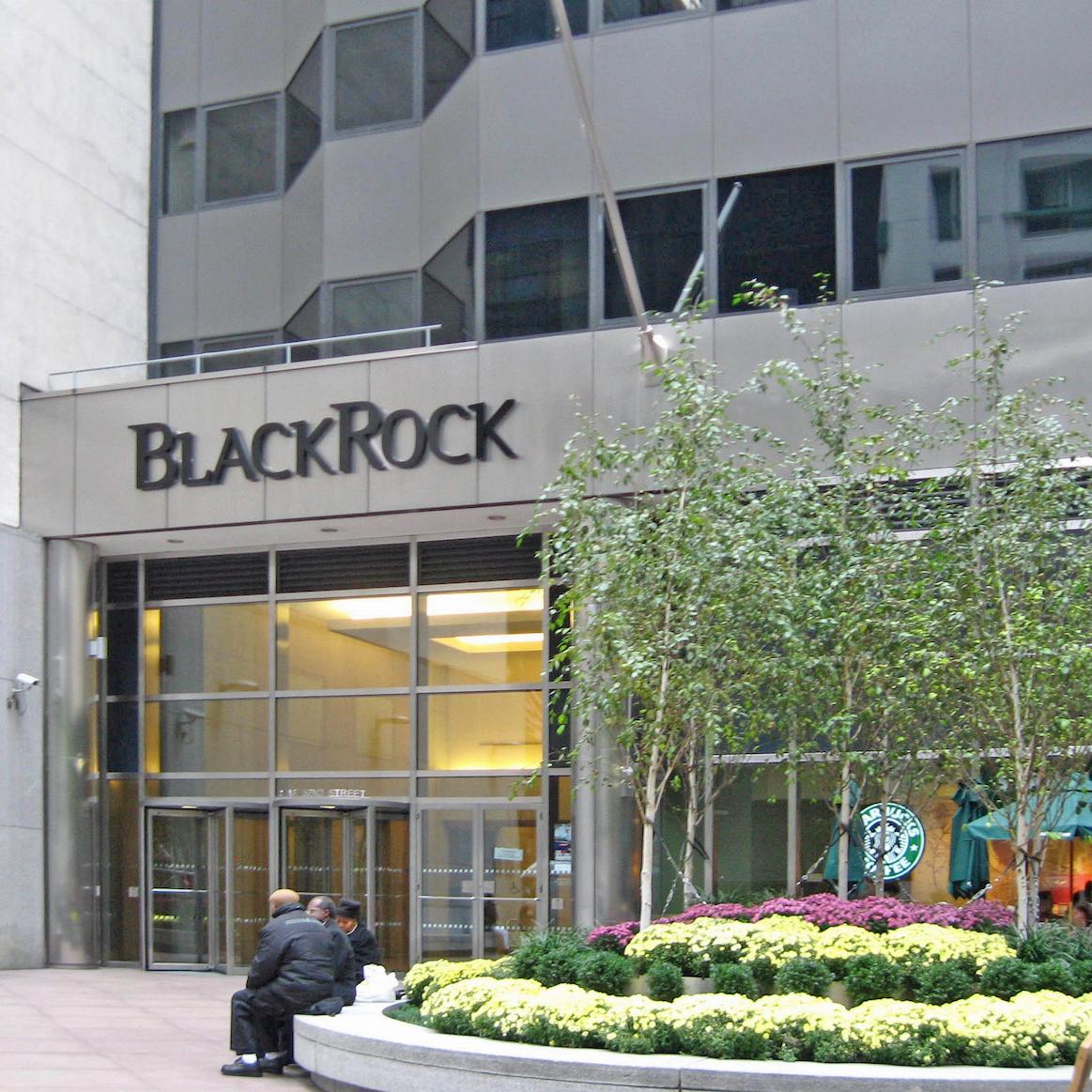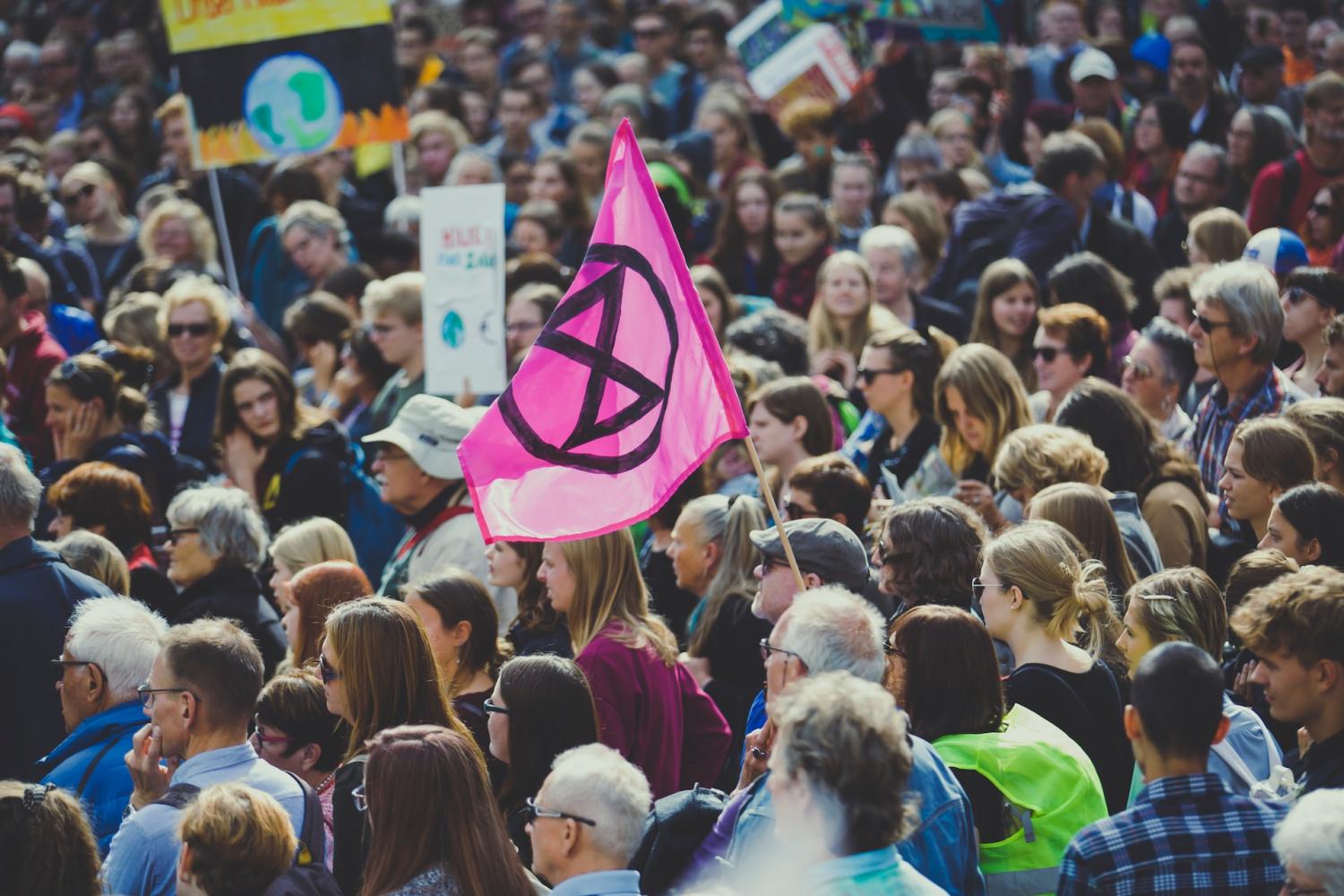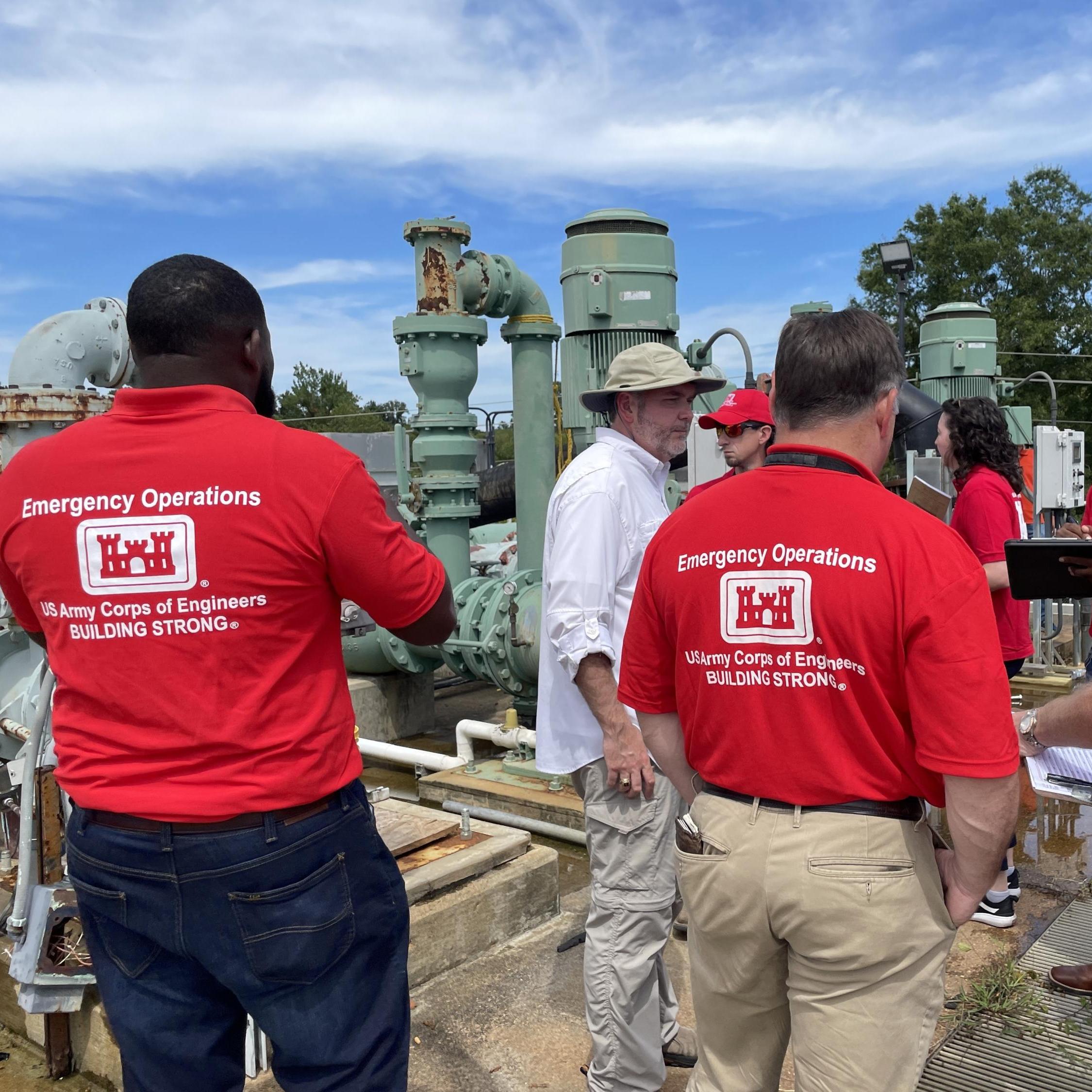Sounding the Alarm on Global Learning Poverty


NABU Reading Ambassadors read with children at the Masoro Learning Center in Kigali, Rwanda. In 2022, NABU and HP established the NABU HP Creative Lab in Kigali to empower local writers and illustrators to create culturally relevant, native tongue children’s books while learning new digital skills.
As the executive director and co-creator of NABU, a New York-based nonprofit publisher of multilingual books on a free digital app, I am proud to be part of the global community dedicated to tackling the global literacy crisis. Now, more than ever, we must reverse the disturbing trends accelerated by the COVID-19 pandemic. The reasons are not just humanitarian; they are economic as well.
According to a June report published by the World Bank, UNESCO, UNICEF, the U.K. government's Foreign Commonwealth and Development Office (FCDO), USAID, and the Bill & Melinda Gates Foundation, a whopping 70 percent of 10-year-olds do not understand a simple written text. Even before the pandemic, the global learning poverty rate was 57 percent.
The economic impact is staggering, with $21 trillion lost in potential lifetime earnings by these students in present value, which is 17 percent of today’s global GDP. This is up from the $17 trillion estimated in 2021.
The alarm has been sounded, loud and clear. To confront escalating global learning poverty in a meaningful way, there must be widespread commitment, from the highest levels down to ordinary members of society. Coalitions of families, educators, civil society, nonprofits and businesses are crucial, and all work must have concrete implementation plans.
International Literacy Day: Transforming literacy learning spaces
The theme of this year’s UNESCO International Literacy Day (observed on Sept. 8) was “transforming literacy learning spaces,” defined as “the physical environment, learning materials, and activities required to facilitate the creation of the space, while the socio-cultural environment, political environment, partnerships, and the assessment of literacy activities is crucial for the sustenance of these spaces.”
Literacy learning, in other words, is not limited to classrooms and schools. Significant learning can take place in workplaces, communities, families and libraries — and it can be digital, as the pandemic demonstrated so clearly.
UNESCO emphasizes the “imperative need for countries in conflict, host countries receiving refugees from conflict regions, for countries facing the devastating impact of climate change, for countries accelerating the post-COVID-19 recovery … to leverage from the existing innovations among the countries, adapt to the ever-evolving learner needs of the youth and adults, and transform their literacy learning spaces.”
Impact of COVID-19 on mother language education
At NABU, we are firmly committed to mother language education. We disrupt the cycle of poverty by leveraging technology to publish children’s books for free on digital platforms in mother tongue languages.
Research shows mother tongue books increase a child’s motivation to read, result in stronger parental engagement in children’s education, and provide an essential bridge to reading in English and other national languages.
UNESCO has long advocated for education in the mother tongue, citing research that shows this is key to improving learning outcomes and academic performance. Learners are engaged and empowered to take part in society, and heritages tied to languages that could easily disappear are preserved. As part of its commitment, UNESCO sponsors International Mother Language Day each year.
During the pandemic, learning tools tended to be offered in dominant national or international languages. One notable exception is the work we did to provide children’s books in Pashto and Dari for recently displaced Afghan children globally. We worked with our office in Rwanda to translate and publish on our app 40 original titles from Kinyarwanda into Pashto and Dari for these children, as well as to create print books for distribution with the mEducation Alliance and HP Inc. While immediately addressing the need for mother tongue educational materials for those refuges, the impact will scale to benefit the larger global community of 60 million people worldwide who speak these languages.
A window of opportunity
The pandemic, as earth-shattering and catastrophic as it has been, could actually provide a unique chance to invest in education to reverse the disturbing increases in education poverty. Global inequalities in childhood education have been revealed, and they are shocking.
We see this massive challenge as a tremendous opportunity and are collaborating with strategic partners to accelerate our impact. For example, NABU is partnering with HP to create and print culturally relevant books in native languages, including the titles Go Stella Go! and I Love Being Me!. Together, we’ve established the NABU HP Creative Labs to train hundreds of creators to write and illustrate children’s books in mother-tongue languages using the latest HP computing technology. The first NABU HP Creative Lab opened in Kigali, Rwanda, in May, with two additional labs opening in the U.S. and the Philippines this year. Through partnerships like this, we’ve been able to grow the NABU app from 100,000 readers to 1.1 million readers in just one year, as we support HP’s goal to accelerate digital equity for 150 million people by 2030.
A World Economic Forum study makes clear the huge potential economic benefits of investing in childhood education: an additional year of education results in up to 15 percent higher lifetime earnings for a person. Further, investment in critical skills such as collaborative problem-solving could bring an additional $2.54 trillion in increased productivity to the global economy.
Investing in solving the global literacy crisis is not only essential for the betterment of humanity, it also is vital to economic progress. Children who have access to these resources NABU provides are given the opportunity read and rise to their full potential.
This article series is sponsored by HP and produced by the TriplePundit editorial team.
Image courtesy of NABU
Don't Believe the Hype? Most Companies Fall Short of Their Climate-Friendly Claims


The world is “going in the wrong direction” on climate change, according to a report released this week by the World Meteorological Organization. “Heatwaves in Europe. Colossal floods in Pakistan …There is nothing natural about the new scale of these disasters,” U.N. Secretary General António Guterres warned in a video message on Tuesday. “The current fossil fuel free-for-all must end now. It is a recipe for permanent climate chaos and suffering.”
It's the latest in a string of dire warnings about the climate crisis, and while the business community often talks a big game on climate action, recent research indicates they often fail to follow through — and that's a major problem.
G7 company emissions fall short of global climate goals
Despite the lip service, companies in the Group of Seven (G7) are falling short on their plans to tackle climate change, according to a study released last week by the nonprofit disclosure platform CDP and management consultancy Oliver Wyman.
As of now, corporate commitments in the G7 — which includes the U.S., U.K., Canada, France, Germany, Italy, Japan and the European Union — align with 2.7 degrees Celsius of global temperature rise by 2100. That's a far cry from the 1.5-degree target set out in the Paris climate agreement, and even from the 2-degree threshold scientists agree will be a major tipping point for catastrophic climate impacts.
The report shows companies in Germany and Italy have the most ambitious plans to reduce emissions, while those in Canada, the U.S. and Japan are lagging furthest behind — largely due to "companies completely lacking targets, rather than targets that lack ambition," CDP said. In Canada — the lowest performing country in the study — less than half of all corporate emissions are covered by any form of reduction target, compared to upwards of 90 percent in Europe.
Editor's note: Be sure to subscribe to our Brands Taking Stands newsletter, which comes out every Wednesday.
“The most important driver of rapid emissions reductions in line with the Paris agreement is ambitious target setting," Laurent Babikian, global director of capital markets for CDP, said in a statement. "It is not acceptable for any country, let alone the world’s most advanced economies, to have industries displaying so little collective ambition."
Even fractions of a degree in temperature rise can have a massive impact. The difference between 1.5 degrees and 2 degrees Celsius, for example, increases the likelihood of ice-free arctic summers tenfold, nearly triples the number of people at risk of exposure to extreme heat events, and doubles the impact on marine fisheries and crop yields, according to the Intergovernmental Panel on Climate Change (IPCC).
"Momentum is growing, but as we approach COP27, we must get our [1.5-degree] goal off of life support," Babikian added. "High-impact companies, and their investors and lenders, must immediately set and honor targets with credible transition plans."

Oil and gas firms’ low-carbon investments fail to match their promises
Speaking of lip service, oil majors are spending hundreds of millions of dollars on publicity campaigns to portray themselves as proactive on the climate crisis, yet only around a tenth of their investment actually goes toward decarbonization, according to a September study from InfluenceMap, which tracks corporate and industry association lobbying on climate policy.
Together, the five "supermajor" oil companies — BP, Shell, Chevron, ExxonMobil and TotalEnergies — spend around $750 million each year on climate-related communications, according to the study. Across 3,421 items of public communications from the companies in 2021, 60 percent contained at least one sustainability claim, while only 23 percent contained claims promoting oil and gas, according to InfluenceMap's analysis.
That seems a bit off balance considering only 12 percent of these companies' 2022 capital expenditure is forecasted to go toward low-carbon activities — and some of those supposedly low-carbon efforts include gas projects. All of the companies, with the exception of BP, plan to increase oil and gas production between 2021 and 2026.
"... None of the companies have aligned their climate policy engagement activities with the goals of the Paris agreement, and retain a dense and global network of industry associations globally, which are highly active in their opposition to Paris-aligned climate policies," the researchers concluded. "The findings raise serious and persistent questions for regulators and the companies’ shareholders, as well as PR and advertising agencies, media and social media platforms that work with the companies."
But the public — and, increasingly, investors — are growing wise to the game. "Investors can already see there is a disconnect between companies’ climate pledges and their actions, most notably their capital expenditure toward decarbonization," Laura Hillis, director of corporate engagement for the Investor Group on Climate Change, added in a statement. "This research ... provides further proof that companies are not putting their money where their mouth is. Investors want to see companies genuinely commit to and plan for the transition to net zero emissions — not more greenwash."
The Business Roundtable backs off its bold words
Three years ago, the Business Roundtable — a CEO-led coalition representing around 200 of the world’s largest companies — issued a statement revising the “Purpose of a Corporation” to serve all stakeholders, not just shareholders, with a focus on promoting environmental sustainability and social equity alongside profit.
Many in the sustainability community — including TriplePundit — pointed to the move as a sign of change, but three years later, the group appears to be backing off those words. In a post published on Medium in August, which was intended to reinforce the 2019 purpose statement, the organization omitted any mention of the environment, Fortune reports. Meanwhile, a recent analysis from the Guardian shows the group continues to lobby in opposition to U.S. climate policy.
"In public the Business Roundtable’s leaders are still committed to change," observed Adam Lowenstein of the Guardian. But the paper's analysis finds that the group has lobbied against key climate provisions behind the scenes — including a multimillion-dollar campaign against President Joe Biden's Build Back Better plan, which contained over $500 billion in funding for decarbonization. More recently, the group opposed the U.S. Securities and Exchange Commission's plan to require that publicly-held companies disclose their carbon emissions and exposure to climate risk.
"In addition, by advocating and lobbying against government action on issues like climate change, the Business Roundtable gives its members space to publicly endorse (and claim credit for endorsing) legislative and regulatory action," Lowenstein continued. “Some individual companies aren’t going to write in and rage against the proposal because they know that will raise concerns with their investors, so they let some of the trade groups do that work for them,” Allison Herren Lee, the SEC’s former acting chair and commissioner, told him.
Hope for the future? Business leaders convene at Climate Week on the road to COP27
While these studies analyze large groups of companies in aggregate and do not necessarily reflect every firm's ambition, collectively the findings indicate, at best, a lack of authenticity — and we know that doesn't work with the public (or employees, investors and so on), at least not for very long.
For example, around 60 percent of U.S. and U.K. adults believe businesses are responsible for considering the impact of their actions and operations on local communities and the environment, according to 2021 research from Salesforce. Clearly business leaders know this — and that's why they feel compelled to communicate with the public about their climate plans. But as we've seen through our ongoing coverage of brands taking stands, a stake in the ground means nothing if it isn't authentic — people will figure it out eventually, and they won't be happy. That's why it's no surprise that a whopping 77 percent of respondents to the same Salesforce survey say businesses aren't doing enough on climate in particular.
The good news is that, again, every fraction of a degree matters — and businesses can still make a big impact for the better. Leaders who say they're intent on doing just that will showcase their plans during Climate Week in New York City next week, with events hosted by the U.N., the Financial Times, Business Fights Poverty and more. "Governments and businesses must work together to tackle these pressing issues to ensure that no one is left behind,” said Sanda Ojiambo, CEO and executive director of the U.N. Global Compact, which works with companies on sustainable development. Check back to TriplePundit next week for our coverage.
Image credit: Matt Palmer and Markus Spiske via Unsplash
Why is Texas Still Picking on BlackRock Over Fossil Energy?


Texas has become the epicenter of the U.S. energy transition. Investors are flocking to the state’s thriving clean tech industries including wind, solar, energy storage, electric vehicles and more. Nevertheless, policymakers in Texas and elsewhere have singled out the world's top asset management firm, BlackRock, for negative attention regarding its commitment to clean power. So, what gives?
BlackRock loves sustainable investing…
BlackRock has been front and center in the sustainable investing field, commonly expressed as ESG, a holistic approach that includes environmental, social and governance goals. “Sustainable investing is about investing in progress, and recognizing that companies solving the world’s biggest challenges can be best positioned to grow,” BlackRock explains on its website.
However, BlackRock also states that pursuit of the bottom line remains its core mission. “Through the combination of traditional investment approaches with environmental, social and governance (ESG) insights, investors ranging from global institutions to individuals are taking a sustainable approach to pursuing their investment goals,” the company's website reads.
…and BlackRock loves fossil energy, too
The emphasis on problem-solving also provides BlackRock with room to continue investing in fossil energy, as the company has repeatedly made clear.
As applied to Texas, that clarity of purpose over fossil energy takes on special meaning, as the new state law SB 13 took effect last year.
SB 13 is aimed at stifling the impact of ESG investing on fossil energy companies. It stipulates that public pension plans in Texas cannot invest in, or contract with, firms that boycott fossil energy, as determined by the state comptroller.
After the law went into effect, BlackRock was among the firms scrambling to deny any appearance of a boycott. On Jan. 3, BlackRock senior managing director and head of external affairs, Dalia Blass, wrote a letter to Texas trade organizations and other stakeholders, in which she detailed BlackRock’s many-faceted interests in Texas-based fossil energy companies.
The letter was published in full online by the Texas Independent Producers and Royalty Owners Association, among other organizations.* “For over 30 years, BlackRock has been a significant investor and capital provider to energy companies, including fossil fuel companies, on behalf of our clients. We will continue to invest in and support fossil fuel companies, including Texas fossil fuel companies,” Blass wrote.
In addition to providing facts and figures on BlackRock’s fossil fuel interests in Texas, Blass also cited statements in support of fossil energy companies by BlackRock founder and CEO Larry Fink.
Why pick on BlackRock?
At the top of her Jan. 3 letter, Blass emphasized that BlackRock is not now, and will not, boycott fossil energy companies. Facts, figures and a clear statement of intent should have been enough, but it wasn’t.
In May, the Austin Journal reported that Texas Comptroller of Public Accounts Glenn Hegar sent a letter to BlackRock and a group of other firms, warning they may be in violation of SB13.
According to the Austin Journal, Hegar included BlackRock in the list of recipients at the request of Texas Lieutenant Gov. Dan Patrick. In an interesting twist, Patrick reportedly held investments in BlackRock but sold them in January of this year, as he prepared to run for re-election to a third term.
Hegar reportedly narrowed that group down to 10 firms by mid-August. By the end of the month he determined that none of the firms were in violation of SB 13 — except for BlackRock.
BlackRock to 19 Republican attorneys general: Why me?
Hegar and Patrick were not the only Texas officials to single out BlackRock for special treatment.
Texas Attorney General Ken Paxton also signed on to an August 4 group letter addressed to BlackRock. The letter was organized by Arizona Attorney General Mark Brnovich and signed by 17 other Republican state attorneys general in addition to Paxton and Brnovich. In a press release dated August 4, Brnovich lauded the letter for “calling out” BlackRock’s “practices of putting leftist politics above investors’ interests and returns.”
Paxton also called attention to the letter in a press release dated August 8. The letter itself does not mention “leftist politics” in so many words, but it does define BlackRock within the framework of a global elite that controls policy regardless of the will of elected representatives.
The letter includes multiple references to BlackRock’s support for global action including the 2015 Paris Agreement on climate change, the Net Zero Asset Managers Alliance, Climate Action 100+ and GFANZ (the Glasgow Financial Alliance for Net Zero). “BlackRock joined groups so focused on promoting the Paris Agreement that they want to stifle opposing viewpoints altogether,” the letter states, adding that “quelching political speech is the action of an activist whose mind is made up.”
“Whether mixed motives arise from a desire to save the world or attract investment from European or left-leaning pension funds, is ultimately irrelevant to the legal violation,” the letter continues.
Antisemitism rears its ugly head
Whether intentional or not, the singular attention to BlackRock evokes antisemitic conspiracy theories alleging the existence of a shadowy, undemocratic global elite that controls world finances.
After all, BlackRock CEO Larry Fink is a well-known Jewish financier who heads a company with far-reaching interests. Somewhat ironically, environmental activists who identify as Jewish have protested BlackRock’s fossil energy investments, on account of an alleged conflict with the tenets of Judaism. However, that has not swayed elected officials in Texas and other states, who have continued to single out BlackRock for attention despite concrete evidence that the company has not engaged in a fossil energy boycott.
On its part, BlackRock appears to be gearing up for the next stage of a long, ugly fight.
The news organization Pensions & Investments was among those posting excerpts from a new letter last week, sent by Dalia Blass of BlackRock to Ken Paxton and the 18 other attorneys general who signed the August 4 letter. Blass sought to dismantle claims of an extra-governmental movement, writing that “governments representing over 90 percent of global GDP have committed to move to net-zero in the coming decades.”
"We believe investors and companies that take a forward-looking position with respect to climate risk and its implications for the energy transition will generate better long-term financial outcomes,” she continued.
"Given our commitment to those saving for retirement, we are disturbed by the emerging trend of political initiatives that sacrifice pension plans' access to high-quality investments — and thereby jeopardize pensioners' financial returns,” she emphasized, taking note of BlackRock’s widespread involvement in ventures involving natural gas as well as renewables and decarbonization.
“Such a significant investment in, and cooperation with, energy industry companies, ranging from international corporations to entities dedicated to serving local communities in your states, is completely at odds with any notion of a boycott," she concluded.
The ball is now apparently back in the court of Hegar, Patrick and Paxton, as well as the other attorneys general who signed the August 4 letter. Their motive in singling out the Jewish CEO of BlackRock for attention may become more clear as the 2022 midterm elections loom closer and campaign rhetoric heats up to the boiling point.
*Editor's note: The January letter from Blass was posted online with the date of Jan. 3, 2021. However, that appears to be a typo on Blass's end. Several websites that posted the letter did so in January 2022, not 2021. Reuters and other media organizations also reported the letter as written in January 2022. In addition, the letter includes multiple footnotes dated in the later months of 2021.
Image credit: Jim Henderson via Wikimedia Commons
The Gap That Keeps on Growing: How Pay Inequity Affects Black Women, Families and Communities


Sept. 21 marks this year’s Black Women’s Equal Pay Day, the point on the calendar when Black women’s income finally catches up with what their white male counterparts were paid in the year prior. The commemoration falls six months after the general Equal Pay Day, demonstrating just how deep pay inequity is between women and men. (Native Women’s Equal Pay Day falls on Nov. 30 this year while Latina Women’s Equal Pay Day isn’t until Dec. 8.)
TriplePundit spoke with leadership consultant and author Arika L. Pierce about the significance of commemorating the day, the effect the pay gap has on Black women and their families, and what businesses need to do to rectify the problem.
“It’s an important day to shed light that this is still a significant issue,” Pierce told us. “The data shows Black women are still underpaid compared to their white male counterparts.” This is in spite of the fact that Black women are enrolling in college and earning degrees at a rate that is quickly making them one of the highest educated demographic groups in the country. While they make up about 7 percent of the total U.S. population, Black women earned 10.9 percent of the doctorates awarded in 2018 and 2019, 14.7 percent of master’s degrees and 11.4 percent of baccalaureates. Yet, as Pierce pointed out, advances in compensation aren’t happening. “The pay gap is getting worse, not better.”
As a group, American women saw the pay inequity gap shrink in 2021 — enough so that Equal Pay Day came nine days earlier this year. But not everyone benefited from the bump. Black, Latina and Native American women all lost wages. This year, Black Women’s Equal Pay Day won’t come until more than a month and a half later than it did in 2021.
What’s particularly infuriating is that the pay inequity gap actually increases for Black women under the circumstances that should be bringing them premium pay: age, education and professional attainment. Between the ages of 16 and 24, as they enter the workforce, Black girls and women are paid 19 percent less than their white male counterparts. But by the time they reach the 55 and over category, the wage gap grows to 39 percent. Likewise, earning a degree is only worth 64 to 65 cents on the dollar for Black women — whereas those who did not complete high school still earn an average of 77 cents for every dollar received by white males with the same educational level. The lowest pay gap coincides with jobs that require the least education and experience. Between Black female and white male cashiers, for example, it sits at 13 percent. But white male nurses make a quarter more than Black female nurses, and for those in management, the gap is a whopping 32 percent.
Over the course of her career, the average Black woman loses out on almost a million dollars due to the pay gap. In discussing how this dynamic has an impact on the wealth gap, Pierce said, “Obviously how much we earn directly equates to how we live and what we can put back in our communities.” She described fair wages and wealth as the link that feeds opportunity, beginning with where families are able to reside and how that affects important issues like whether their children attend quality, well-funded schools, or even whether they are able to drink the local water. Furthermore, when their parents’ work is undervalued and underpaid, children have fewer opportunities than their peers who benefit from the trickle-down effects of privilege.
Whereas less than half of white women are breadwinners for their families, around 75 percent of Black women carry that burden — on top of earning less for full-time work. The burden isn’t just financial either. “It’s extremely frustrating,” Pierce said. “Just being aware of disparities, especially with intersectionality.”
“We can’t ever let our guard down,” she explained further. “There’s no failing forward.” She described the burnout that comes from being paid less to work harder and how Black women feel as though they have to do it all. “There’s an emotional toll being in corporate organizations that actually were not created for us.”
In the next article of this two-part series, Pierce discusses the structural causes behind pay inequity and what companies need to do to fix it. After all — “We put so much into our work, equal compensation is a no-brainer.”
Image credit: Christina Morillo via Pexels
Do Protest Movements Work? New Study Says, 'We Shall Overcome — Gradually'


A 2019 Extinction Rebellion protest in Nuremberg, Germany
“Wars are rarely fought how they are planned,” or so said labor organizer Hugh O'Donnell after being arrested for leading workers in mass protest during the Homestead Strike of 1892 in Pittsburgh, Pennsylvania.
More than 130 years later, a new report on the efficacy of protest movements appears to have the evidence to support O’Donnell’s claim.
Social Change Lab researchers James Ozden and Sam Glover recently published their findings of a study on protest movements writ large. The duo collaborated with experts, examined the history of various protests, and researched public opinion on the subject. The pair then concluded that, though the majority of protest movements will fail, there is a small percentage that succeed in affecting change and/or influencing public thought, policy and behavior.
Ozden and Glover concluded that protest movements have a small but measurable impact on public opinion. The researchers based these findings on expert interviews and relevant academic work, and pointed to the ongoing Extinction Rebellion climate protest movement in England as a “case study” in a protest’s effect on public opinion.
So, what does the impact of an effective protest look like? Ozden and Glover believe the resulting impact of an effective protest would appear minimal, at least compared to the purported aims of a given movement.
Black Lives Matter protests in 2020 didn't end with local governments across the country defunding their police departments, and many did the opposite. Los Angeles and New York City have increased their police budgets since 2020. Other cities like Portland cut police budgets, only to “refund the police” just a year later. Therefore, if the average size of a police department budget is the only metric by which to judge the success of the BLM protests, then the movement was a failure.
Yet the protests undoubtedly brought a swirl of attention to widespread cases of police brutality across the nation, and the notion of holding rogue cops accountable for unjust actions has endured and gained momentum in the two years since the BLM summer protests of 2020.
The result was “sustained interest in novel discourse put forward by Black Lives Matter a year after the majority of the protests, and shown to be [10 times] larger than pre-protest activity,” the researchers wrote in their study.
The Social Change Lab study also concluded with great certainty that protests have a net positive effect on “public discourse,” meaning that movements often draw greater attention to the issues at the core of the protest and change the way people discuss the topic. Through this lens, the BLM movement was certainly effective — just not necessarily successful in achieving its own aims.
And if the BLM movement failed to win over some hearts and minds, it might not be due to civil disobedience or other obtrusive protest methods. The study claims that, contrary to popular belief, disruptive actions taken by protesters — such as Extinction Rebellion activists blocking off roads — do not discredit protest movements or undermine public support.
“Our bespoke public opinion polling found that disruptive nonviolent climate protest in the U.K. did not cause any “backfire” effect, i.e. there was no negative impact on public support for climate despite disruptive tactics,” the researchers wrote.
Likewise, Ozden and Glover concluded that protests have an equal impact (small, yet observable) on policy outcome, saying, “Our expert interviews with academics and movements experts revealed that large protests can be seen as credible signals of public opinion, and public opinion plays an important role in policymaking.”
In summary: The study indicates successful protests can generate change in discourse and opinion, which ultimately can translate to change in policy. But the rate at which protests succeed is variable, with no apparent method to the madness. That is, Ozden and Glover’s study can provide no clear framework or template for the successful protest movement. History bears this out — the Pullman’s Strike of 1894 (the reason for Labor Day) stood on the backs of The Great Railroad Strike of 1877 and other failed Gilded Era labor movements.
Public support may not have landed on the side of the laborer in the 1870s, but two decades of labor movements primed the American public to support the Pullman railway men in their pursuit of humane working conditions and compensation.
The arc of the protest universe is long, but it bends toward piecemeal justice.
Image credit: Markus Spiske/Unsplash
New Study Makes the Case for Fleet Electrification at the U.S. Postal Service


U.S. Postmaster General Louis DeJoy has been reluctant to commit to an all-electric Postal Service delivery fleet, but leading electric vehicle stakeholders are beginning to apply some pressure. In the latest development, the Ford Motor Co. has supported a new study that underscores the benefits of 100 percent fleet electrification for the USPS.
A false start on USPS fleet electrification
Amazon, UPS, Walmart and many other leaders in the delivery field are beginning to organize in support of fleet electrification now that costs have fallen and battery range has improved.
That provides the U.S. Postal Service with an opportunity to position itself as a leader in the movement. The agency is still using tens of thousands of aging delivery vehicles that fail to meet modern standards of safety, comfort and efficiency. They must be replaced, and soon.
Nevertheless, last year DeJoy introduced a new fleet replacement plan that called for just 10 percent electric vehicles.
DeJoy cited the relatively high upfront cost of electric vehicles in his decision. However, studies show that the lifetime costs of electric drive are lower than for internal combustion engines, including maintenance and repair as well as fuel.
In response to DeJoy’s 10 percent EV cap, Congress began discussing additional funding for new Postal Service vehicles earlier this year. That appeared to move the needle, and DeJoy bumped his EV pledge up to 40 percent. However, the new commitment would still leave the Postal Service tethered to a new, long-term investment in thousands of fossil-burning vehicles.
The fleet electrification gloves are off
The newly signed Inflation Reduction Act of 2022 could make a difference. It provides $3 billion to cut emissions from the U.S. Postal Service fleet. That includes $1.29 billion toward vehicle purchases and $1.71 billion for infrastructure support.
If DeJoy continues to balk despite the increased funding, EV stakeholders are ready with new evidence for the benefits of a zero-emission fleet in terms of reducing greenhouse gas emissions.
EV advocates have already pointed out serious flaws in the environmental analysis used by DeJoy to justify the Postal Service’s initial 10 percent EV commitment.
The new study builds on those findings. It was published last month, under the title “Life Cycle Greenhouse Gas Emissions of the USPS Next Generation Delivery Vehicle Fleet,” in the journal Environmental Science & Technology, a publication of the American Chemistry Society. The research was supported by an award from the Ford-University of Michigan Alliance Project as well as support from the Responsible Battery Coalition. Additional support came from the University of Michigan School for Environment and Sustainability.
The wide-ranging study has much to say about shortcomings in the Postal Service’s methodology. Unlike the Postal Service, the U-M team conducted a cradle-to-grave lifecycle assessment of greenhouse gas emissions for a 100 percent EV fleet compared to the 10 percent scenario. Specifically, the U-M team noted that the Postal Service’s limited analysis failed to account for the ongoing decarbonization of the U.S. electric grid, and it failed to account for ongoing improvements in EV technology.
“When anticipated improvements to electric vehicles and future electrical-grid decarbonization are factored in, a fully electric USPS delivery fleet would result in up to 63 percent lower greenhouse gas emissions than the [Postal Service] estimated, over the lifetime of the fleet,” U-M reported.
“Our paper highlights the fact that the USPS analysis is significantly flawed, which led them to dramatically underestimate the benefits of [battery electric vehicles], which could have impacted their decision-making process," said lead author Maxwell Woody.
The U-M study also took a close look at the Postal Service’s cost comparison analysis. As described by the U-M team, the Postal Service anticipated a savings of $3.3 billion for fleet replacement with 90 percent conventional vehicles. However, U-M charged that the Postal Service failed to account for the “climate and public health damages associated with continued use of fossil fuel-powered vehicles.”
Those damages have come to the fore in recent months, as the U.S. suffered through its third-hottest summer in 128 years.
More pressure on U.S. Postal Service
If the U-M study does not convince DeJoy to up the ante on electric delivery vehicles, other EV stakeholders have been sharpening their legal swords.
In April, 16 state attorneys-general filed a lawsuit over DeJoy’s fleet replacement plans, charging that the agency failed to conduct an environmental analysis in a timely manner. The Center for Biological Diversity, Earthjustice, CleanAirNow KC and Sierra Club joined together in another lawsuit. The Natural Resources Defense Council and United Auto Workers also filed a suit of their own.
Meanwhile, DeJoy has defended his EV strategy. In a presentation to the Postal Service Board of Governors on August 9, he stated, “The progress we have been making in improving our financial condition as well as our developing future operating strategy has enabled us to increase our commitment to electric vehicles consistent with our delivery vehicle strategy.”
DeJoy also suggested that the Postal Service will continue to incorporate more flexibility into its fleet replacement plan. However, he issued a veiled warning against outside interference. “I am confident that we have the best, and only, team in the nation solely focused on understanding the needs of the Postal Service,” he said.
It appears that Ford, for one, did not get the memo.
Other EV manufacturers and suppliers may also have something to say about the Postal Service and its needs as the fleet electrification movement continues to grow, whether DeJoy invites their comments or not.
Image credits: Joel Moysuh and Diego De Alba via Unsplash
Bridging the Digital Divide Starts with a Map


An estimated 60 million Americans currently lack access to broadband services, according to real estate data and analytics company LightBox. That figure quadruples the 2021 Federal Communications Commission’s (FCC) estimate of the digital divide, which is based on census tract data.
Any American that has spent time away from the big city knows that internet in the countryside or a small town can be sluggish (cue frozen Zoom screens), or simply non-existent. As education, healthcare, courts and work moved online during the pandemic, internet access became akin to a human right, and infrastructure development a necessity.
The Joe Biden administration has recently stepped in with a couple of bills that help address the digital divide. The Infrastructure Investment and Jobs Act, signed by the president in August 2021, allocates $42.5 billion to states and territories for expanding internet access. More recently, the Tribal Broadband Connectivity Program promises more than $500 million in awards and $1 billion more in funding for Tribal communities. The U.S. Government Accountability Office (GAO) calculates that at least 18 percent of those living on Tribal lands can’t access broadband, compared to 4 percent of people across the rest of the U.S. A White House statement from August about the program states that the National Telecommunications and Information Administration had already received 300 applications requesting $5 billion in funding for Tribal broadband.
With this new flow of money, however, states, territories and Indigenous Tribes still need to know where to develop. Accurate maps of infrastructure and access are a missing puzzle piece for much of the U.S.
Mapping the digital divide, state-by-state
In Washtenaw County, Michigan, accurately mapping broadband service will constitute about a quarter of the work needed to secure completely reliable internet, Chris Scharrer, founder and CEO of DCS Technology Design, told NPR member station WFAE in Charlotte. DCS is the firm overseeing the county’s broadband expansion initiative.
While the FCC is in the process of building a comprehensive map of nationwide broadband availability, by way of Congress’s 2020 Broadband DATA Act, it seems the final product won’t come for a while. The Commission published an update this summer announcing that it is now collecting information from over 2,500 broadband providers.
A handful of states — such as Virginia, New York and Georgia — are developing their own maps. Georgia went to the private sector for help in seeking to take on its own digital divide. LightBox started building the state’s map in 2019, the first broadband map the company tackled. The process revealed more than 400,000 areas that the government hadn’t known were unserved. Georgia’s map is now available to the public. If you zoom into a blue area, you’ll find little red dots indicating unserved locations. Now, county after county is becoming “broadband ready,” which includes planning for infrastructure expansion by amending any local comprehensive plan and creating a new ordinance related to broadband access.
A little company can make the map…and makes it
Eric Frank, founder and CEO of LightBox, told TriplePundit that his team was inspired to learn more about broadband needs in the U.S. “We realized that we’re the closest thing that anybody could have to a national map of all this data, and so we started investing in our capabilities,” he said. The same month that Georgia contracted LightBox, the information and technology company launched its "Location Intelligence" broadband initiative. The company’s efforts have led to a nationwide SmartFabric connectivity map which now includes U.S territories.
In the mapping process, Frank’s team quickly realized that the type of data they would need for the map was distinctly different from the information they usually seek for real estate clients. The real estate industry focuses on the 80 percent of the U.S. that is generally described as economically viable, Frank explained. “We had to put in place an effort to go out and collect data,” he said. Some of that data was already available from places like county assessors. Tribal areas, on the other hand, required investigation. They looked at satellite imagery, drew building footprints, and analyzed cellphone data to see when and where people were congregating. Here’s Frank’s illustration of the goal: "You don't need to bring broadband to a silo, but you certainly need to bring broadband to the farmer's farm…”
Texas is the next state that will use LightBox’s services, and Frank said another U.S. state just signed on with the company, with a dozen more in discussions. According to its website, LightBox is the only company that has created a broadband map of served and unserved at a structure-level for two states using more than 4,000 data sources. Although the maps are created with a specific purpose in mind, Frank said they’re multifunctional — useful, for example, to highway departments and emergency services as well.
Mapping out broadband access is more than a job
To make a long story short, LightBox has become committed to helping states make use of federal funds to expand broadband infrastructure and tackle the stubborn digital divide. When you talk to Frank, you feel a sense of mission. Speaking about populations with poor internet access, Frank said: “You wouldn't be surprised if I told you, 'Well, those are also people that are in a flood zone, and those are also people that are in a heat zone. Those are also people that were put in neighborhoods where there might be brownfield or other environmental issues.’” Data from Bloomberg Cities backs up Frank’s observations. A 2021 report found an inverse correlation between broadband access and poverty in the largest U.S. cities.
LightBox has been reaching out to advocacy groups to engage them in the wealth of data the company has accumulated and organized. “We’re not a very big company in terms of people, but we try to raise awareness that we have this great data,” Frank said. “There’s a commercial aspect to it, but we are very keen on trying to help bridge the digital divide and provide services to help them.”
Frank emphasizes, however, that maps aren’t going to finish the work of getting the country connected. Governments need to forge the right partnerships and use them to actually lay down fiber. That’s where the hard work comes in. Maps are just a tool, he said. “Somebody’s got to put the proverbial shovel in the ground.”
Expanding broadband to those forgotten areas of the U.S. will be a major undertaking. The question arises: What will success mean? Here’s a comprehensive vision from Jordan Beezley of Colorado’s Department of Regulatory Agencies, telling Pew Trusts: “I don't have to think about whether or not the house I'm going to buy has electricity or whether or not that electricity will work. Once we are at that point [with broadband], I think we've won."
Image credit: Towfiqu Barbhuiya/Unsplash
How Environmental Racism and Corporate Mismanagement Caused the Jackson Water Crisis


U. S. Army Corps of Engineers Vicksburg District engineers onsite at Jackson's O.B. Curtis Water Treatment Plant on September 1, 2022, after receiving a FEMA mission assignment to perform assessments of the plant's pumping and electrical systems.
In late August, flooding in Jackson, Mississippi, caused the city’s main water treatment plant to fail, leaving its 150,000 residents without access to water to drink, flush toilets or fight fires.
Environmental racism an underlying cause of the Jackson crisis
Jackson has been plagued in recent years by water problems. In 2021, the city was under a boil water advisory for 225 days. That year, the city asked for $47 million to update its failing water infrastructure, but the state refused, giving the state’s capital city only $3 million. Jackson is a majority-Black city that overwhelmingly votes Democratic, which often places the city at loggerheads with the state government’s Republican majority.
“While the recent flooding has been a contributor to where we are today, this is not the first time this issue has come about, where the city of Jackson is without water and unable to function,” Vangela Wade, president and CEO of the Mississippi Center for Justice, told The Hill earlier this month. “Over the last 50 years, you could say that this has been brewing because of the lack of investment in the city’s infrastructure by primarily state leadership.”
Additional interviews by The Hill’s Zack Budryk and Cheyanne M. Daniels revealed frustration from local activists who noted that nearby majority-white cities don’t share Jackson’s ongoing problems with water infrastructure.
How a multinational further damaged Jackson’s water infrastructure
The current crisis came on the heels of a boil water advisory that came into effect in July when state health officials warned the public about cloudy water.
The state’s water problems are old and complex. Most wastewater plants have a lifespan of 40 years, but one of Jackson’s main wastewater facilities is more than 100 years old.
As local Jackson reporters have long covered, in 2013 the city contracted with Siemens to fix Jackson’s aging water infrastructure and install a new billing system, paying the corporation over $94 million. Siemens began its efforts to secure a contract with Jackson in 2010. In various pitch emails, the company guaranteed at least $120 million in savings for the city, and also guaranteed that the savings from the new, repaired infrastructure and billing mechanisms would cover the cost of the project itself.
Instead of providing the city with repairs and additional revenue, the company — as independent journalist Judd Legum of Popular Information explained in detail last week — contributed even more problems to Jackson’s ongoing struggles with its water systems. Among various problems, the new billing system malfunctioned and left the city with an unpaid water bill balance of over $43 million. Siemens also used a series of subcontractors that acted as pass-throughs and inflated the price of equipment. Subcontractors purchased equipment from manufacturers and then sold them to Siemens for a hefty markup. The city, now bearing the cost of the contract, damages and the unpaid bill balance, was forced to use general funds and issue bonds to make repairs. Though the city settled with Siemens in 2019, the cost of the settlement did not cover the cost of damages.
What happens now?
As of last week, the city’s water pressure had been restored, though it is still not drinkable. The mayor of Jackson, Chokwe Antar Lumumba, has warned that increased pressure could lead to burst pipes, and the Mississippi National Guard is continuing to distribute bottled water to residents who can travel to distribution points.
The crisis in Jackson is the result of decades of the state refusing to invest in infrastructure within a poor, majority-Black city. Jackson is 80 percent Black, and per-capita income is under $23,000 — even less than the entire state of Mississippi ($25,400), one of the poorer U.S. states. The poverty rate in the city is close to 25 percent.
The estimated cost to completely repair Jackson’s water infrastructure is an estimated $1 billion. However, during the 2021 water crisis, when asked about providing additional funding to make critical repairs to Jackson’s water infrastructure, Mississippi's Republican governor, Tate Reeves, replied, “I do think it's really important that the city of Jackson start collecting their water bill payments before they start going and asking everyone else to pony up more money.” But again, as Legum has pointed out, the new automatic water meters that Siemens and its various subcontractors installed across Jackson didn’t function properly. Many residents never received any bills, while others received statements asking for inaccurate and unusually high amounts.
Schools in Jackson have been closed while they are without water, but the recent increase in water pressure was substantial enough to allow for the reopening of schools. While this is more positive news, Mayor Lumumba reminded residents this week that the water crisis is far from over. In an interview with ABC, he said, “Even when the pressure is restored, even when we’re not under a boil-water notice, it’s not a matter of if these systems will fail, but when these systems will fail.”
Image credit: U.S. Army Corps of Engineers Vicksburg District Website
What Will It Take to Save the Monarch Butterfly?


“America’s insect” is on the verge of extinction. The migratory monarch butterfly is dying, and the decline of the beloved bugs threatens a “butterfly effect” on entire ecosystems. After the International Union for Conservation of Nature (ICUN) classified monarchs as ‘endangered’ in late July, conservationists are rallying to stop the risk of extinction.
The IUCN’s decision comes after years of requests from conservation groups to classify the insects as endangered. Only the migratory monarch was classified as endangered, but many scientific groups think the nonmigratory monarch should be added as well.
Jeanne Dodds, the creative engagement director for the Endangered Species Coalition, said that this recent classification may not carry the necessary legislative influence to affect policy outcomes in the U.S.
“It is important to note that the recent ‘Endangered’ listing of monarchs by the IUCN, which is an international body making important recommendations to influence policy, is not the same as a U.S. Endangered Species Act designation as ‘Endangered,’” Dodds said. “An ESA listing would allow for national legal, regulatory actions to be taken for protection of the species.”
The monarch butterfly is in decline: How we got here
Across species, loss of habitat is the leading cause of decline. “For monarchs, this includes the loss of habitat including native milkweed (the obligate host plant for the monarch breeding cycle) and logging and deforestation of overwintering sites in California and Mexico,” Dodds said, citing climate change and the use of pesticides, fungicides and herbicides as additional factors in the decline of pollinator populations.
In 2014, a broad coalition of businesses, scientists and organizations petitioned the federal government to protect monarchs as “threatened” under the Endangered Species Act. Then in 2015, the U.S. government pledged $3.2 trillion to save the monarchs, but the U.S. Fish and Wildlife Service delayed its decision on the monarch’s status for six years, finally announcing in December 2020 that it would not classify the butterflies as endangered. At the time, the FWS said it worried that classifying the monarch butterfly as endangered could take attention and resources away from other endangered species.
Still, Dodds said the regulation of the chemicals used in pesticides could be the most effective legal action to take to protect the monarch butterfly. “Endangered Species Coalition is concerned with and working to advocate for EPA consulting with FWS to review chemicals before they are approved for impacts to Threatened and Endangered species,” she said.
A butterfly effect
The extinction of the migratory monarch butterflies would trigger a calamitous chain reaction.
The result would be very real “butterfly effect” — imagine what the sudden lack of tens of thousands of beating butterfly wings will do to the fragile equilibrium of our natural order.
Insects, birds like the black-backed oriole, and other predators would lose a crucial food source. But that’s just the tip of the iceberg. Without the monarch butterfly serving its vital purpose as a pollinator of vegetables and herbs, staple crops of the human diet could be decimated.
“Without appropriate habitat, we will continue to diminish critically important pollinating species like monarchs,” Dodds said. “In turn, monarchs are an important food source for predators, including other insects and bird species, so the decline of monarch butterflies impacts other wildlife reliant on their presence.”
Conversely, monarch population growth would be a boon for humans and other species. “Habitat loss is the main driver of species endangerment and extinction, so when we conserve or restore pollinator habitat with a diversity of native pollinator plants, all species — including humans — benefit,” Dodds explained. “In particular, agricultural lands benefit from native pollinator plants and the increased presence of all kinds of pollinators, including monarchs.”
Image credit: Derek Ramsey/Wikimedia Commons
This ETF Seeks to Make Affordable Housing a Reality for Americans Excluded from the Real Estate Market


There’s no shortage of exchange-traded funds (ETFs) that say one of their objectives is to expand the pool of affordable housing or real estate. But there’s only one EFT that invests in mortgage-backed securities with the goal to boost home ownership within communities that conventional mortgage and real estate companies have long underserved.
Last year, Dallas-based Impact Shares, in a partnership with Community Capital Management, launched the Impact Shares Affordable Housing MBS ETF (listed on the New York Stock Exchange, and otherwise known, as OWNS), with the mission to “invest in the dignity of homeownership for these traditionally underserved communities.”
The managers of OWNS are investing in mortgage-backed securities issued by Fannie Mae, Freddie Mac and Ginnie Mae, as well as those from Community Development Financial Institutions (CDFIs) and minority-owned banks. The fund has pledged that more than half of the loans in OWNS will be made to low- and middle-income borrowers. Such home loans that OWNS has issued, and will continue to fund, are in census tracts where more than 50 percent of the population is non-white and at least 40 percent of the population is living at or below the U.S. federal government’s poverty line.
“One of the largest barriers to wealth creation for minorities and Black Americans is the lack of inherited wealth,” Impact Shares’ CEO, Ethan Powell, explained to TriplePundit when the fund debuted last summer. “Homeownership is critical is this regard. It is also in the nation’s best interest — it can bring stability to families, revitalize distressed communities, and have a positive impact to economic growth.”
In the year since, OWNS' managers says that within its holdings, it has invested in various custom-created mortgage pools, which comprise at least 375 home loans. Of those loans, more than 80 percent have been made to low- and middle-income minority borrowers, with almost 200 loans issued to women of color. So far, the ETF has invested in loans across 37 states as well as the District of Columbia — including 24 different persistent poverty counties across the U.S. OWNS maintains that it is the first, and only, publicly-listed fund that supports affordable housing by extending credit to home borrowers who would otherwise be shunned by conventional banks and mortgage companies.
“OWNS is the culmination of our focus on addressing the racial wealth gap,” said Alyssa Greenspan, president and COO of Community Capital Management, in an emailed statement to 3p. “CCM has invested over $3.9 billion in minority communities since our inception, including what we believe to be the first [mortgage-backed securities] pool consisting solely of women-led minority families in 2018. OWNS enables all types of investors the opportunity to focus on affordable homeownership to help reduce the wealth gap issue.”
In the grand scheme of equities, OWNS is tiny: At last count, its net holdings were $92 million. It’s been a rough going in 2022 for the fund, and OWNS has lost about 8 percent of its value year-to-date. Nevertheless, we have to put OWNS’ recent performance in perspective. Year to date, the S&P 500 has fallen in value by approximately 18 percent, while the Down Jones Industrial Average has declined 14 percent in value since early January. It’s been a difficult year for many stocks and funds. But markets do eventually correct themselves, and OWNS is providing a market-driven solution for homeowners whose families have long been denied the financial benefits of intergenerational wealth, which is largely made possible by home ownership.
In addition to OWNS, Impact Shares takes on additional challenges beyond affordable housing by managing three other socially conscious ETFs. The NAACP Minority Empowerment ETF aligns with Morningstar’s Minority Empowerment Index, which provides exposure to U.S. companies with strong racial and ethnic diversity, equity and inclusion policies in place. For investors who seek out companies that demonstrate solid support of women’s empowerment and gender equality, the four-year-old YWCA Women’s Empowerment ETF offers such an option. And the Sustainable Development Goals Global Equity ETF pools the equities of companies that demonstrate strong alignment with the U.N. Sustainable Development Goals (SDGs).
Image credit: August de Richelieu via Pexels